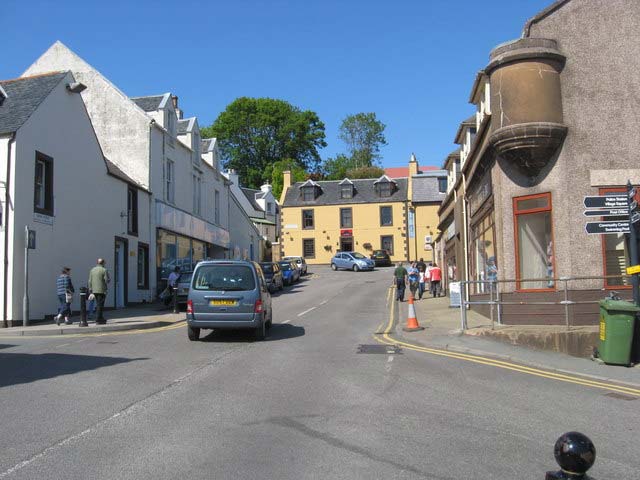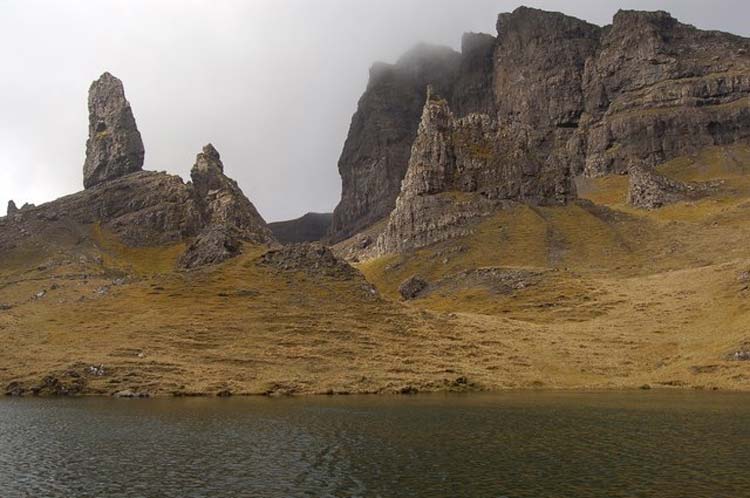The Isle of Skye has so much to offer. Explore the rich history of this unspoiled area which boasts some of Skye’s most beautiful – and extraordinary – scenery.
Wildlife
Amid the spectacular landscape, from high ridges and cliffs to the coast and seashore, Trotternish has a wealth of flora & fauna to be discovered during your walks.
Skye is a paradise for nature lovers. Birdwatchers visit this part of Scotland from all over the world to see many rare birds. Over the grassland moors, Golden Plover, Curlews and melodious Skylarks can be seen. By dashing burns and rivers, bobbing Dippers and Wagtails dart among the boulders. Buzzards and Kestrels are almost a common site and we are fortunate enough to have Golden Eagles nesting in the high cliffs of the Trotternish ridge.
The elusive Corncrake locates a number of crofting meadows nearby and a sighting of the rare Merlin is possible. Along the seashore and lochs, shy Otters swim and watchful Seals patrol the sheltered bays. Seabirds abound; diving Gannets, Cormorants, Shags, Guillemots, Puffins, noisy Oystercatchers and stealthy Herons. In spring, the sea cliffs are alive with Kittiwakes, Fulmars and Gulls. The Sea Eagle has now become established and there are also sightings of Ospreys.
One of the most spectacular sites however, and usually seen from the Rubha Hunish headland walk, are Dolphins and Whales and Basking Sharks make an occasional visit, patrolling just yards out from the sea shore.
From Spring through to Autumn, Scottish wildflowers come and go in all their colourful glory. Spring primroses, new green bracken, broom and gorses, yellow flag irises and soft perfumed heather blanketing the hills for late August.
Bring Binoculars if you can!

Above: River Rha Waterfall by DeFacto – Own work, CC BY-SA 4.0
Gaelic music
Discover this powerful landscape on foot and to savour the rich musical culture from this part of Scotland – the land of the Gaels.
Trotternish remains a very Gaelic community, or indeed a number of Gaelic communities. Gaelic is still taught as a first language in schools and spoken in many of our homes.
Far from a dying art, Gaelic music is being revived and promoted throughout the area at feis, festivals, the Mod and Skye’s Gaelic College, Sabhal Mor Ostaig.
Within Trotternish we boast a truly amazing wealth of Gaelic and Scottish musicians. During your visit, you’ll gain an appreciation and enjoyment of the history, the artistry and the haunting sounds of many types of Gaelic music.
For musicians or those of you with fine voices, this also provides an opportunity to join in with Skye’s informal ceilidhs – bring your instrument!

Above: “Viking Canal” at Rubha an Dùnainby By A chachaileith – Own work, Public Domain
Whisky
Hip flasks are allowed! Fresh air during the days – the golden nectar in the evenings. What a life! What a holiday! Glayva!
Combine ‘Eilean a Cheo’ (Isle of Mists), a land of springs, waterfalls, heather and peat,f with the age old process which draws on nature’s gifts to provide the essence of whisky. Skye is home to Talisker whisky – ‘The Golden Spirit of Skye’. Made in the Cuillin’s shadow on the shores of Loch Harport, this sweetly enticing golden malt, now has a huge following throughout the world as one of the ‘Classic Malts of Scotland’.
During your visit, learn some of the fascinating history and background associated with whisky in the Highlands and enjoy tasting blended and malt whiskies.
Experience some of the award winning local real ales from The Isle of Skye Brewery nearby at Uig. With such names as ‘Red Cuillin’, ‘Young Pretender’, ‘Hebridean Gold’ and ‘Black Cuillin’, they are obviously not for the faint hearted!
Heritage
Trotternish ranks high among the most historic areas of the Scottish Highlands, and even now history is still being uncovered just a few miles from Duntulm. From Norsemen to Picts & Celts, evidence can be seen around the entire peninsula in the form of old forts, brochs, standing stones and settlements.
Trotternish is said to be derived from the old Norse language and means ‘Thrond’s Headland. Of Thrond himself alas! We know no more, but the whole of the Trotternish peninsula bears testament to the influence of the Vikings, with the place names of Uig, Quiraing, Staffin and Flodigarry being just some that originated from the language of those early Norse visitors.
Of course Trotternish is particularly famous for its Jacobite links to Flora MacDonald and Bonnie Prince Charlie. In 1746, with a price on his head following his defeat at Culloden, the Prince sailed from his hideout on Benbecula to Skye accompanied by local lass and heroine-to-be, Flora MacDonald. They tried to land at Waternish, but the militia were on the prowl and shots were fired at their boat. The pair headed for Trotternish instead and landed a few miles south of Duntulm at Monkstadt. The Prince eventually reach France, and following her release from prison in London in 1747, the celebrated Flora married and settled in the Cottage at Flodigarry. The Flodigarry Hotel site has more of the story.

Above: Portree (By James Denham, CC BY-SA 2.0)
Suggestions for your itinerary
Trotternish ridge walks : The Old Man of Storr, the Quiraing , Beinn Edra & Fairy Glen.
Coastal walks : Rubha Hunish Headland, Lealt Falls, Coral Beaches, Neist Point Light House.
Visits : Skye Museum of Island Life, evening Gaelic concert at the Aros Heritage Centre
More music : local evening Ceilidhs and demonstrations with Gaelic singers and traditional songs from Skye & the Outer Hebrides; pipes, small pipes and drums; ‘mouth music’; clarsach; accordion and fiddle.
Shopping : If it’s your thing, take yourself to Portree!
Originally written for skyewalks.co.uk. Main image shows rock pinnacles of The Storr, which feature in some of the opening scenes in the film Prometheus, photo taken by John Allan, CC BY-SA 2.0

